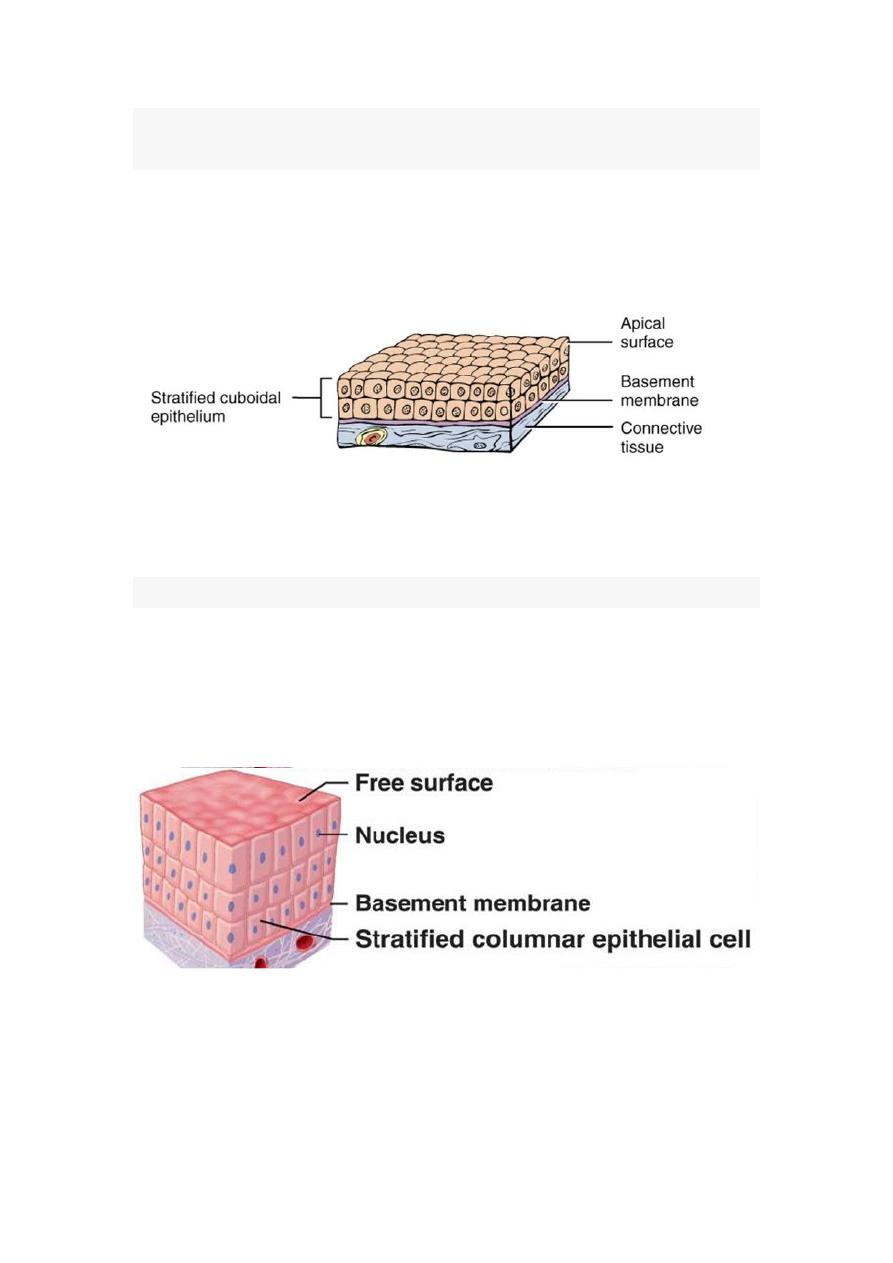
1
6
th
lesson Biology
Stratified Epithelium
the cells are arranged in more than one layer.
Stratified epithelium is classified into the following types based on
the shape of the constituent cells:
Stratified squamous epithelium
Stratified cuboidal epithelium
Stratified columnar epithelium
Stratified squamous epithelium
Keratinized stratified squamous epithelium
- multiple layers of squamous cells
- the apical layer of cells are dead and filled with the protein keratin
- this is found in the epidermis (top layer of skin)
- is used to hinder water loss and creates a physical barrier for us from the
outside world
Nonkeratinized stratified squamous epithelium
- multiple layers of squamous cells
- none of the cells are dead
- found in moist slippery areas of the body such as the vagina, oral
mucosa, tongue and esophagus.

2
Stratified cuboidal epithelium:
In which, more than one layer of cuboidal cells are found arranged on a
basement membrane. It occurs in some parts of the reproductive system,
ducts of sweat glands and in the lining of the pharynx.
Stratified columnar epithelium:
In this type, the epithelium has several layers of polyhedral cells with
columnar cells found only in the outer layer. It occurs in the large ducts
of some glands and in the male urethra.

3
Transitional epithelium
is a type of tissue consisting of multiple layers of epithelial cells which
can contract and expand. It is so named because of this function in the
transition of degree of distension. This tissue structure type is found
in urothelium, including that of the renal pelvis, urinary bladder,
the ureters, and the prostatic ducts of the prostate.
( )لالطالع
